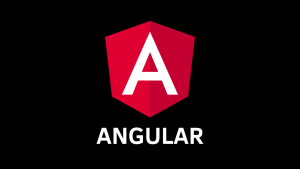Angular Vs Vue: Which Framework is Best For Front-end Development?

Web development has undergone significant advancements since the era of static HTML pages in its early days. Today, development of web applications is much more complex. Developers have a plethora of tools and frameworks to choose from when building dynamic and interactive front-end user interfaces. However, Angular and Vue score high among the most popular front-end development JavaScript frameworks
Google developed Angular as a comprehensive framework. Angular offers a complete solution for constructing complex and large-scale web applications. It follows the Model-View-Controller (MVC) architecture and utilizes TypeScript, which is a superset of JavaScript with added features, including static typing. In addition, Angular comes with a wide range of features, such as dependency injection, advanced routing capabilities, and form handling.
On the other hand, Vue is a lightweight framework that people recognize for its simplicity and user-friendly nature. Due to its simple API and excellent documentation, Vue has grown in popularity in recent years. People often compare Vue to Angular since they share some similarities in terms of their approach to building web applications. However, Vue is more flexible and customizable than Angular, making it a popular choice for smaller projects and startups.
Choosing between Angular and Vue depends on various factors, such as the size and complexity of the project, the team’s experience and skillset, and the project’s scalability requirements. In this blog, we will explore the differences and similarities between Angular and Vue in terms of every basic thing. That will help you to decide which framework is best fit for your next front-end development project.
A BRIEF INTRODUCTION TO ANGULAR
Google is the creator and maintainer of Angular, an open-source front-end development framework that utilizes TypeScript. It provides a set of tools and techniques that help Angular development services to create dynamic and responsive web applications.
Firstly, it is important to note that Angular was not Google’s first attempt at creating a web application framework. Before Angular, Google had released a framework called “Google Web Toolkit” in 2006. However, in this framework developers need to write code in Java, which limits its appeal. The design of Angular is to address this issue by creating a more accessible framework that developers who were already familiar with JavaScript could use.
Angular was originally released in 2010 as “AngularJS”. Misko Hevery creates Angular. He was a Google employee who was working on a project called “GetAngular”. Hevery decided to make the product open source and distribute it under the Apache license. AngularJS was an immediate success and it got a large community of developers.
Angular 2, a significant upgrade to Angular, Google introduced it in 2016. This version of Angular was a complete rescript of the original framework. Angular 2 has several new features, such as good performance, better support for mobile devices, and a more modular architecture. This new version of Angular was also designed to be more scalable, making it easier to build large, complex web applications.
Since the release of Angular 2, Google has continued to improve the framework with regular updates and releases. Today, Angular is widely used by developers around the world, with many large companies and organizations relying on it to build their web applications.
Popular Applications That Use Angular For Front-End Development:
- Microsoft Xbox
- Forbes
- Paypal
- The Guardian
- Gmail
- Weather.com
- Jet Blue
- Deutsche Bank
- WikiWand
- UpWork
- Mixer
A BRIEF INTRODUCTION TO VUE
Vue, also known as Vue.js, is a popular open-source front-end development JavaScript framework. It was first released in 2014. Since then, it has gained a large following of developers who appreciate its ease of use and flexibility. To understand how Vue became so popular, let’s take a look at its history.
Vue was created by Evan You, a Google employee who also works on AngularJS. Evan had become frustrated with the complexity of AngularJS and decided to create a new framework that was simpler and easier to use. This new framework was called Vue. It quickly gained popularity among developers who appreciated its simplicity.
Vue was first released as an open-source project in 2014. At the time, it was primarily China that uses Vue, where it had gained a strong following. However, as more and more developers began to discover Vue, its popularity began to spread to other parts of the world.
In 2016, Vue received a major update with the release of Vue 2.0. This new version of Vue introduced several new features, such as improved performance and better support for server-side rendering. Vue also allows developers to build large, complex web applications.
Since the release of Vue 2.0, the framework has continued to grow in popularity. In 2020, Vue came third as the most popular JavaScript framework, behind only React and Angular. This popularity can be attributed to many factors, including Vue’s ease of use.
Popular Applications That Use Vue For Front-End Development:
- Grammarly
- Teleo
- Adobe
- Gitlab
- Behance
- Leafplayer
- Laravel Spark
- Phone Harbor: Virtual Phone Number Manager
- Habitica
- Font Awesome
IMPORTANT FEATURES OF ANGULAR
Angular is a popular front-end web development framework that provides a wide range of features to developers. Important features of Angular are:
Two-way data binding
Angular allows you to bind data between your model and view with ease, making it easy to keep your user interface and data in sync.
Dependency Injection
Angular features an integrated dependency injection mechanism that simplifies the management and distribution of code among different components.
Directives
Angular provides a set of directives that allow you to extend HTML with custom attributes and tags, making it easier to build complex user interfaces.
Components
Angular organizes your application into reusable components, which helps keep your code modular and easy to maintain.
Routing
With its robust routing system, Angular enables seamless navigation between various application views without the need to refresh the page.
Reactive Forms
Angular provides a reactive forms module that makes it easy to handle form inputs, validate data, and manage form states.
HTTP client
Angular provides a built-in HTTP client that makes it easy to send and receive data from a server.
Testing
Angular’s inbuilt support for testing streamlines the process of writing automated tests for your application, making it easy to do so.
Accessibility
Angular is to be accessible by default, making it easy to create applications that are usable by everyone.
CLI
Angular provides a command-line interface (CLI) that makes it easy to develop and test Angular applications. flexibility, and a strong community of developers.
IMPORTANT FEATURES OF VUE
Vue is a popular progressive JavaScript framework that is used for developing applications some of the most common features are as follows:
Reactive Data Binding
Vue offers reactive data for a binding feature that allows the state of a component to automatically change when the data changes.
Virtual DOM
Vue uses a virtual DOM to efficiently update and preprocess to the user interface, which speeds up rendering and boost performance
Components
Developers can create reusable components with Vue’s component-based architecture and integrate them with large applications.
Directives
Vue provides a set of directives that allow developers to add custom behavior to DOM elements.
Templating
Vue supports declarative rendering of templates, allowing developers to easily define the structure of the UI.
Routine
With client-side routing support, Vue simplifies the creation of single-page applications featuring multiple views.
Management
Vue supports state management libraries such as Vuex that manage states in complex applications.
Transition and Animation
has built-in transition and animation capabilities that allow developers to create dynamic and engaging user interfaces.
Customizable
Vue offers a high degree of flexibility and can be effortlessly incorporated with various libraries and frameworks, making it highly customizable.
Tooling
Vue has a powerful set of tools including Vue CLI, Vue Devtools, and Vue Test Utils, which make it easy to develop, debug, and test Vue applications.
ANGULAR VS VUE: THE DIFFERENCES
Here are some of the main differences between the two:
Architecture and Data Binding
Angular follows a component-based architecture that allows for better separation of concerns, while Vue follows a more template-based approach. Angular allows binding data between models and views with ease. This feature simplifies the task of maintaining synchronized data. In contrast, Vue defaults to one-way data binding, resulting in improved performance and greater control.
Learning Curve
Angular has a steeper learning curve due to its complex architecture and documentation, while Vue is relatively simple to learn and has a more intuitive syntax.
Performance
Vue outperforms Angular in terms of performance, mainly because it utilizes a virtual DOM that updates the view only when required, resulting in quicker rendering times.
Size
Angular is a larger framework compared to Vue, with a higher number of features and modules. Vue is smaller and more lightweight, which makes it simpler to assimilate with other libraries and frameworks.
Community and Ecosystem
Angular has a larger and more mature community, tutorials, documentation, and resources available. Vue has a smaller community, but it is growing rapidly, and it has a more modular and flexible ecosystem.
HOW MUCH THESE BOTH ARE SIMILAR
As these both are JavaScript frameworks, they both surely share some similarities. Here are some areas where they are similar:
Components
Both Angular and Vue follow a component-based architecture where UI components are defined using templates, styles, and logic in a single file.
Directives
Both frameworks use directives to manipulate the DOM and provide additional functionality to components.
Reactive Programming
Both Angular and Vue utilize reactive programming concepts to enable efficient and responsive data handling.
TypeScript
Both Angular and Vue support the use of TypeScript, a statically-typed superset of JavaScript, which provides better code organization, type checking, and tooling support.
Routing
Both frameworks come with a router that facilitates the navigation between various views and components.
ANGULAR OR VUE: THE BEST FRAMEWORK FOR FRONT-END DEVELOPMENT
The choice between Angular and Vue as the best framework for front-end development depends on various factors, including project requirements, team experience and preferences, and the size and complexity of the project.
Angular may be a better choice for large and complex projects that require a robust architecture, strict conventions, and extensive documentation. It offers a rich set of features, including a powerful CLI, testing tools, dependency injection, and two-way data binding, making it an excellent choice for enterprise-level applications.
On the other hand, Vue is a more lightweight and flexible framework that may be more suitable for smaller and medium-sized projects. It offers a simpler learning curve, intuitive syntax, and one-way data binding by default, which results in better performance and faster rendering times. Vue is known for its high modularity, which simplifies the integration of the framework with other libraries and frameworks
Ultimately, the choice between Angular and Vue depends on the specific needs of the project, the team’s skills and preferences, and the desired trade-offs between development speed, performance, scalability, and maintainability. Each of these frameworks has its advantages and limitations, and it is crucial to assess them based on your specific project needs before arriving at a decision.
CONCLUSION
After the thorough comparison of Angular Vs Vue, it’s still hard to find a clear answer which one is the best framework for Front-end development projects. As you have seen, each framework has its own set of advantages and disadvantages, as well as differences and similarities. In a nutshell, you can decide the best framework as per your project’s requirements. Additionally, after deciding on a framework you must approach Frontend development services that can provide you with the best Angular developers and Vue developers.






